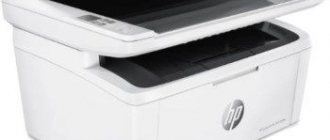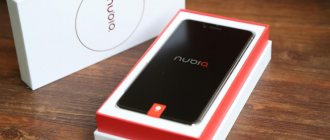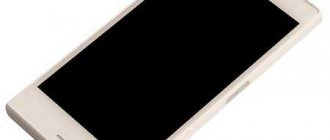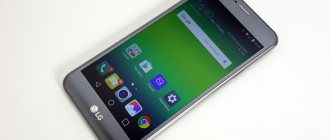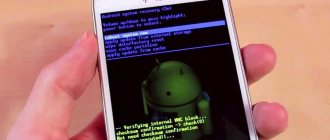When creating their flagship smartphone LG G7 ThinQ, the Koreans relied on four key points: a proprietary system with two cameras (regular and wide-angle), the introduction of artificial intelligence into this system, a high level of security of the case while maintaining a mini-jack and high-quality sound. The models and Q7+ retain some of the features of their older sister: a body that has passed MIL-STD 810G testing, a sound system with support for the DTS:X codec, and a camera with the proprietary QLens system.
The basic characteristics of the Q7 and Q7+ are the same: Mediatek MT6750 (6750S) platform, 5.5-inch display with Full HD resolution and 18:9 aspect ratio, plastic case with an aluminum frame. Will relying on bright accents work against an ordinary general background?
The LG Q7+ took part in our review. Its differences from its brother Q7: 16-megapixel camera instead of 13-megapixel and more memory (4+64 GB versus 3+32). Otherwise, these smartphones are identical.
⇡#Technical characteristics
| LG Q7+ | LG Q7 | Honor 10 | Nokia 7 Plus | Vivo V9 | |
| Display | 5.5 inches, IPS, 2160 × 1080 pixels, 442 ppi, capacitive multi-touch | 5.5 inches, IPS, 2160 × 1080 pixels, 442 ppi, capacitive multi-touch | 5.84 inches, IPS, 2280 × 1080 pixels, 432 ppi, capacitive multi-touch | 6 inches, IPS, 2160 × 1080 pixels, 401 ppi, capacitive multi-touch | 6.3 inches, IPS, 2280 × 1080 pixels, 400 ppi, capacitive multi-touch |
| Protective glass | No information | No information | Corning Gorilla Glass (version unknown) | Corning Gorilla Glass 3 | Yes, manufacturer unknown |
| CPU | Mediatek MT6750S: eight cores ARM Cortex-A53, 1.5 GHz | Mediatek MT6750S: eight cores ARM Cortex-A53, 1.5 GHz | HiSilicon Kirin 970: four ARM Cortex A73 cores, 2.4 GHz + four ARM Cortex A53 cores, 1.8 GHz; HiAI architecture | Qualcomm Snapdragon 660: eight Kryo 260 cores, 2.2 GHz | Qualcomm Snapdragon 626: eight cores ARM Cortex-A53, 2.2 GHz |
| Graphics controller | ARM Mali-T860MP2, 700 MHz | ARM Mali-T860MP2, 700 MHz | ARM Mali-G72 MP12, 850 MHz | Adreno 512, 850 MHz | Adreno 506, 650 MHz |
| RAM | 4 GB | 3 GB | 4 GB | 4 GB | 4 GB |
| Flash memory | 64 GB | 32 GB | 64/128 GB | 64 GB | 64 GB |
| Memory card support | Eat | Eat | No | Eat | Eat |
| Connectors | USB Type-C, 3.5 mm mini-jack | USB Type-C, 3.5 mm mini-jack | USB Type-C, 3.5 mm mini-jack | USB Type-C, 3.5 mm mini-jack | MicroUSB, mini-jack 3.5 mm |
| SIM cards | 2 × nano-SIM | 2 × nano-SIM | 2 × nano-SIM | 2 × nano-SIM | 2 × nano-SIM |
| Cellular connection 2G | GSM 850/900/1800/1900 MHz | GSM 850/900/1800/1900 MHz | GSM 850/900/1800/1900 MHz | GSM 850/900/1800/1900 MHz | GSM 850/900/1800/1900 MHz |
| Cellular 3G | UMTS 900/2100 MHz | UMTS 900/2100 MHz | HSDPA 850/900/1900/2100 MHz | HSDPA 850/900/1900/2100 | HSDPA 850/900/1900/2100 |
| Cellular 4G | LTE Cat. 6 (up to 300 Mbit/s), bands 1, 3, 7, 8, 20, 38 | LTE Cat. 6 (up to 300 Mbit/s), bands 1, 3, 7, 8, 20, 38 | LTE Cat. 13 (up to 400 Mbit/s), bands 1, 3, 5, 6, 7, 8, 19, 20, 38, 40, 41 | LTE Cat. 6 (300/50 Mbit/s): bands 1, 3, 5, 7, 8, 20, 28, 38, 40, 41 | LTE Cat. 6 (300/50 Mbit/s), bands 1, 3, 7, 8, 20, 28, 38, 40, 41 |
| WiFi | 802.11b/g/n | 802.11a/b/g/n | 802.11a/b/g/n/ac | 802.11a/b/g/n/ac | 802.11a/b/g/n/ac |
| Bluetooth | 4.2 | 4.2 | 4.2 (aptX HD) | 5.0 | 4.2 |
| NFC | Eat | Eat | Eat | Eat | No |
| Navigation | GPS, A-GPS, GLONASS | GPS, A-GPS, GLONASS | GPS, A-GPS, GLONASS, BeiDou | GPS, A-GPS, GLONASS, BeiDou | GPS, A-GPS, GLONASS, BeiDou |
| Sensors | Illumination, proximity, accelerometer/gyroscope, magnetometer (digital compass) | Illumination, proximity, accelerometer/gyroscope, magnetometer (digital compass) | Light, proximity, accelerometer/gyroscope, magnetometer (digital compass), IR sensor | Illumination, proximity, accelerometer/gyroscope, magnetometer (digital compass) | Illumination, proximity, accelerometer/gyroscope, magnetometer (digital compass) |
| Fingerprint's scanner | Eat | Eat | Eat | Eat | Eat |
| Main camera | 16 MP, ƒ/2.2, phase detection autofocus, LED flash | 13 MP, ƒ/2.2, phase detection autofocus, LED flash | Dual module, 24 + 16 MP, ƒ/1.8, phase detection autofocus, LED flash | Dual module, 12 MP, ƒ/1.75 + 13 MP, ƒ/2.6, phase detection autofocus, dual LED flash | Dual module, 16 MP, ƒ/2.0 + 5 MP, phase detection autofocus, dual LED flash |
| Front-camera | 8 MP, ƒ/1.9, fixed focus | 8 MP, ƒ/1.9, fixed focus | 24 MP, ƒ/2.0, fixed focus, no flash | 16 MP, ƒ/2.0, fixed focus | 24 MP, ƒ/2.0, fixed focus |
| Nutrition | Non-removable battery: 11.4 Wh (3000 mAh, 3.8 V) | Non-removable battery: 11.4 Wh (3000 mAh, 3.8 V) | Non-removable battery: 12.92 Wh (3400 mAh, 3.8 V) | Non-removable 14.44 Wh battery (3800 mAh, 3.8 V) | Non-removable battery: 12.39 Wh (3260 mAh, 3.8 V) |
| Size | 143.8 × 69.3 × 7.99 mm | 143.8 × 69.3 × 7.99 mm | 149.6 × 71.2 × 7.7 mm | 158.4 × 75.6 × 9.55 mm | 154.8 × 75 × 7.89 mm |
| Weight | 145 grams | 145 grams | 153 grams | 183 grams | 150 grams |
| Housing protection | Yes, IP68 standard | Yes, IP68 standard | No | No | No |
| operating system | Android 8.1 Oreo, own shell | Android 8.1 Oreo, own shell | Android 8.1 Oreo, EMUI shell | Android 8.1 Oreo (Android One) | Android 8.1 Oreo, Funtouch OS 4.0 shell |
| Current price | 25,990 rubles | 21,990 rubles | 25,690 rubles for the 4/64 GB version, 27,800 rubles for the 4/128 GB version | 27,990 rubles | 23,990 rubles |
| LG Q7+ – information about the filling according to the CPU-Z application | ||||
Advantages and disadvantages of the Q7 phone
The LG Q7 measures 69.3 mm wide, 143.8 mm long and 8.4 mm thick. With such dimensions it is convenient to operate the device with one hand. In addition, the weight of the device is about 145 g. Even if you operate the device with one hand, its weight is almost not felt.
If we evaluate the overall ease of use of the phone taking into account the size and weight, then there will be no problems with everyday use.
The smartphone is equipped with an 8-core Qualcomm Snapdragon 450 processor, which is made on 14 nm. technical process.
The smartphone has 3 GB. RAM, which is quite enough. In very rare cases it will not be enough, but with this amount of RAM, you will rarely have problems.
The device's data storage capacity is 32 GB, and while this is enough for photos, it may not be enough for video shooting and a large number of games.
The phone is compatible with SD cards, so you can easily expand its memory. So you probably don't need to worry about storage capacity.
The Q7 has a display diagonal of 5.5 inches. It's quite big. Photos, videos and games will look great on this screen. It is also suitable for productive use, such as creating a business document.
The smartphone has a high-end display and any graphic content you display on it, including videos and games, will be displayed clearly.
The main camera of the phone has 12.98 megapixels and can take high-resolution photos and videos. While you're shooting landscapes or printing high-definition photos, you may want a higher-resolution camera, but most of the time you'll be happy with the camera.
Also, the smartphone has a 7.99 megapixel front camera, which is average for smartphone cameras. This is good enough for taking selfies, but you may not be satisfied with group photos or their print quality.
The battery capacity of LG Q7 is 3000 mAh, which is a relatively large indicator. Compared to other smartphones, the battery life of the LG Q7 is good. With this capacity, you won't experience any problems even if you spend time on the Internet or Twitter for a long period of time. Even while playing games or watching videos, you can do so comfortably without worrying about battery life. However, some caution should be exercised when watching movies or playing games for too long.
⇡#Design, ergonomics and software
The LG Q7 and Q7+ have an elongated display, 18:9 format, but there is no notch. The screen ultimately occupies 78% of the front panel area, which is also quite good.
The most important design feature of the LG Q7 and Q7+ is the size of this elongated display: 5.5 inches. When you take a smartphone in your hand for the first time, you can’t help but be surprised at how compact it is! Do such phones still exist? He literally falls into his pocket, and - lo and behold! – it can be operated with one hand. The time for “shovels” has come, it would seem, finally and irrevocably, but LG gives some respite - an elongated display with a diagonal of 5.5 inches is enough for this.
Dimensions LG Q7 and Q7+ – 143.8 × 69.3 × 7.99 mm, weight – 145 grams. These are definitely one of the lightest smartphones in their class.
LG Q7+, front panel: above the display – earpiece, front camera, light sensor and status indicator
The LG Q7 and Q7+ look neat - the front panel is covered with 2.5D glass, the edges are made of metal with plastic inserts for correct operation of the antennas, the back cover is made of glossy plastic. Don’t rush to shout “fi” and throw tomatoes at the screen - this solution, firstly, allows you to keep the original appearance of your smartphone unchanged longer (it’s much easier to wipe plastic than glass), and secondly, it won’t break the first time it hits the floor . The focus is not on external gloss, but on reliability.
LG Q7+, rear panel: main camera, single LED flash, fingerprint scanner
Dust and moisture protection class – IP68. The smartphone has also passed 14 MIL-STD 810G tests developed by the US Army to evaluate equipment performance in harsh environments. I wouldn’t recommend immediately throwing the Q7 into a wall or immersing it in an aquarium, but you should definitely count on its survivability.
LG Q7+, left side: volume keys/camera shutter release, two slots for nano-SIM and memory card
LG Q7+, right side: power key
LG Q7 and Q7+ are offered in two color variations: blue and black. As you can easily see in the photographs, we have a black Q7+.
LG Q7+, top edge: microphone and inserts for correct operation of antennas
LG Q7+, bottom edge: mini-jack (3.5 mm) for headphones, USB Type-C port, microphone and main speaker
The arrangement of functional elements, on the one hand, is very logical, and on the other hand, it is not without surprises. The volume control and power keys of the device are located on different sides, the mini-jack along with the charging port is located together at the bottom, and there are two trays for SIM cards and memory cards: one of them houses one SIM card, the other holds the second SIM card and card microSD Yes, you won’t have to sacrifice dual-SIM functionality in favor of memory expansion.
The fingerprint scanner is located on the back panel, under the camera lens. It is not difficult to feel it with your finger, the location is ideal, however, false clicks on the camera lens are inevitable - they are too similar in shape to the scanner and are located close to each other.
The scanner uses a capacitive sensor, which demonstrates excellent response speed and accuracy. With its help, you can block not only the entire device, but also individual applications. It can also be used as a shutter button for the selfie camera, to take screenshots of the screen, and to control the notification panel. Unlocking the LG Q7 and Q7+ using facial recognition is not provided, even despite the use of the Android 8.1 Oreo operating system, in which this function is, in principle, built in by default.
Screenshot gallery
View all images (26)
The point is in the proprietary LG shell, which we have already become closely acquainted with when communicating with last year’s flagships LG G6 and V30+. Apart from the limitations mentioned above, the shell leaves a very pleasant impression - it has enough family features (like unusual navigation in the settings and some design features) without being intrusive. There is a fairly extensive set of pre-installed applications, from basic ones (calculator, clock, etc.) to proprietary ones (LG Switch, file manager, QuickMemo+, Smart Doctor and the application basket, which stores deleted programs for some time after you decide to erase them ). Third-party applications have already installed Facebook, Instagram, 2GIS, the Yandex search bar (along with the standard Google), the Yandex.Search and Sberbank applications. Also, after installing the Yandex.Search update, Alice appears on the phone, which by default offers a weather forecast and her opinion about it - you can discuss this with her if you wish.
Detailed technical specifications
Make and model
Make and model of the device, and alternative names (if any).
| Brand Device manufacturer company. | LG |
| Model Device name. | Q7 |
| Alternative names Other model names, if available. Sometimes the model is called differently, depending on the country or because of popular nicknames. | LM-Q610YB Q610YB |
Design
Appearance of the device including dimensions, weight, volume, colors and materials.
| Width The horizontal side of the device when used in standard orientation. | 69.3 mm (millimeters) |
| Height The vertical side of the device when used in standard orientation. | 143.8 mm (millimeters) |
| Thickness The cross-sectional size of the device. | 8.4 mm (millimeters) |
| Weight How much does the device weigh excluding the case, SIM and memory cards and other additional elements. | 145 g (grams) |
| Volume Approximate value calculated using the formula: length times width times height. | 83.71 cm³ (cubic centimeters) |
| Colors What colors is the device available in? | Blue Black Purple |
| Housing materials What materials is the body made of? | Metal |
System on a Chip (SoC)
A system on a chip, a single-chip system (System on a Chip, SoC) is when several systems performing different device functions are connected on one chip.
| System on a Chip (SoC) A single-chip system that contains components such as a processor, graphics accelerator, memory units, communication interfaces, etc., as well as software for the operation of the system. | Qualcomm Snapdragon 450 |
Central processing unit (CPU)
| Central processing unit (CPU) The main component of the device is responsible for calculations and data processing. | ARM Cortex-A53 |
| Technical process What technological process is used to make the chip? The smaller the process technology, the better - the chips consume less power and generate less heat. | 14 nm (nanometers) |
| Processor size Processor capacity is a parameter that indicates how many bits of data a processor register processes in 1 clock cycle. This is usually 32 or 64 bits. | 64 bit |
| Instruction Set Architecture Instruction set architecture (ISA) is a programmable part of the microprocessor core used by software to control the operation of the processor. | ARMv8 |
| Number of processor cores The processor can be either single-core or multi-core. The performance of the processor depends on the number of cores (threads). The more cores working simultaneously, the higher the power consumption, so in mobile devices all cores are used only under high load. | 8 |
| CPU clock speed Clock speed is the number of operations per second that a processor or its core can achieve. The higher the frequency, the higher the overall performance of the device, but performance also depends on the processor architecture and the number of cores. | 1800 MHz (megahertz) |
Graphics Processing Unit (GPU)
| Graphics Processing Unit (GPU) The graphics processing unit (GPU) is used to process and display graphics - 3D effects, games, interfaces and other visual elements. Due to the pipeline architecture, the GPU is many times more efficient in graphics processing than the processor. | Qualcomm Adreno 506 |
Random access memory (RAM)
| Amount of random access memory (RAM) RAM (Random Access Memory, RAM, RAM) is temporary memory (works only while the device is running), which stores data and code for the operational operation of programs and applications. The more RAM, the more programs you can run simultaneously without loss of performance (there will be fewer “brakes”). | 3 GB (gigabytes) |
| Type of random access memory (RAM) Information about the type of RAM used by the device. | LPDDR3 |
| Number of RAM channels 1 is a single-channel RAM operating mode, basic, when 1 memory module is used. 2 is already a two-channel mode - a mode of parallel operation of 2 modules or pairs of modules, memory channels - this mode is 2 times faster than a single-channel one. 3 – three-channel mode is 3 times faster than single-channel mode. | Single channel |
| RAM frequency The frequency of RAM determines the speed of RAM, or rather the speed of data transfer and reception. In theory, the higher the frequency, the more powerful the RAM. | 933 MHz (megahertz) |
Built-in memory
Most mobile devices have built-in Flash memory, which is used as a storage for system data, the operating system, as well as user data - photos, videos, recordings and much more.
| Built-in memory capacity The higher the amount of built-in memory, the more games, programs, music, videos and your other files will fit in the device, especially the amount of memory is important when the device does not support memory cards. | 32 GB (gigabytes) |
Operating system
A mobile operating system (OS) is pre-installed software with a well-thought-out interface for user control of device functions.
| Operating system (OS) The operating system installed by default by the device manufacturer, as well as its version. | Android 8.0 Oreo |
Battery
To operate autonomously, a mobile device requires a battery that powers all its components.
| Battery capacity The main characteristic of a battery is its maximum capacity, that is, the charge it can store. Capacity is measured in mAh (mAh, milliamp-hour). The higher the capacity, the longer the mobile device can work. | 3000 mAh (milliamp-hours) |
| Battery type Many types of batteries have been used in portable devices, but NiCd (nickel-cadmium), NiMH (nickel-metal hydride), and even more so SLA (lead-acid) batteries are already considered obsolete. Instead, modern mobile devices use Li-Ion (lithium-ion) and Li-Pol, Li-Poly (lithium-polymer) batteries. | Li-polymer |
| Fast charging Fast charging is when the device charges very quickly. For example, up to 50-70% of a full battery charge in ten minutes. | Yes |
Screen
The screen (display) is the main element for displaying graphic information.
| Technology The technology used to make the screen. There are many types of display manufacturing with their pros and cons. | IPS |
| Diagonal The screen diagonal of a device is measured in inches (inch, in or simply ″), and 1″ is equal to 2.54 cm. | 5.5 in (inches) 139.7 mm (millimeters) 13.97 cm (centimeters) |
| Width Approximate screen width | 62.48 mm (millimeters) 6.25 cm (centimeters) |
| Height Approximate screen height | 124.95 mm (millimeters) 12.5 cm (centimeters) |
| Aspect Ratio Aspect ratio is the ratio of the shorter side of the screen, which is considered to be 1, to the longer side, which is denoted by a decimal fraction indicating the ratio to the short side. | 2:1 2:1 (18:9) |
| Screen resolution Screen resolution is the number of horizontal pixels (dots) multiplied by the number of vertical pixels. The higher the resolution, the more detailed the image will be. | 1080 x 2160 pixels |
| Pixel Density The number of pixels per inch or PPI (pixels per inch) indicates the density of pixels per 1 inch (2.54 cm) of the screen. The higher the PPI, the sharper the image, and the less visible or even invisible “squares and dots” (pixels). | 439 ppi (pixels per inch) 172 ppcm (pixels per centimeter) |
| Color depth Color depth means how many bits are used in 1 pixel to display color (bits per pixel). | 24 bit 16777216 colors |
| Screen area Approximate usable area occupied by the screen on the front of the device. The higher the percentage, the narrower the frames around the display or the smaller the “chin with bangs.” | 78.59% (percent) |
| Touch screen A touch screen is a device that usually covers the display and is a touch input tool. In fact, in mobile devices, the touchscreen is a replacement for the keyboard and mouse. | Yes |
| Touch screen type There are many types of touch screens, with their pros and cons. Mobile devices often use capacitive touchscreens, but technology does not stand still and new types of sensors are appearing. | Capacitive |
| Multi-touch Touch screen support for two or more touches. For example, zooming photos with two fingers. | Yes |
| 2.5D screen 2.5D is a display with rounded edges. Device manufacturers use a 2.5D screen as a design element, for a pleasant tactile sensation, or to add durability, dust and moisture protection. | Yes |
Main camera
The main camera, usually built into the rear of the device, is designed for creating photo and video content.
| Maximum image resolution This is the maximum number of pixels (dots) horizontally and vertically. The higher the resolution, the more detailed the image will be. Resolution can also be indicated in megapixels - this is the total number of pixels that can be in the image, calculated by the formula: vertical pixels multiplied by the number of horizontal pixels and divide the resulting amount by 1 million. | 4160 x 3120 pixels 12.98 MP (megapixels) |
| Matrix type There are two main types of photomatrix, CCD (Charge-Coupled Device) and CMOS (Complimentary Metal-Oxide Semiconductor). Mobile devices mainly use a CMOS matrix - it requires less space, has low power consumption and heating. Recently, new types of sensors have begun to appear, for example PureCel from OmniVision. | CMOS (complementary metal-oxide semiconductor) |
| Diaphragm Aperture (f-number, f) is used to control the light flux passing through the lens. The aperture is indicated by a fraction, and the smaller the fractional number, the higher the aperture passing through the lens. The more light that passes through the lens, the better overall, less noise in your photos and better night photography. | f/2.2 |
| Flash type Most mobile devices are equipped with light-emitting diode (LED) flashes, but there are also xenon flashes. As a flash, xenon is better - it is more powerful, but LED is more versatile (can work as a flashlight) and consumes less electricity. | LED |
| Maximum video resolution This is the maximum number of pixels (dots) horizontally and vertically. The higher the resolution, the more detailed the image will be. | 1920 x 1080 pixels 2.07 MP (megapixels) |
| FPS video recording at maximum resolution FPS (Frames per Second, frame rate) is the number of frames that changes in 1 second. The higher the number of frames per second, the smoother the image will be. In this case, we mean the number of frames that the camera can achieve at its maximum resolution; the lower the resolution, the higher the FPS can be. | 30 fps (frames per second) |
| Presence of flash Incorporating a flash into a mobile device allows you to take pictures in low light conditions. Creates the necessary lighting and compensates for the lack of natural light. | Yes |
| Digital zoom With digital zoom (zoom, enlargement), the subject is brought closer due to software image algorithms. The higher the magnification with digital zoom, the worse the image quality (noise, blur) will be compared to a non-zoomed one. | Yes |
| Focus on face Function of auto-detection of living objects and autofocus on their face or head. | Yes |
| Panoramic shooting mode Panoramic photography is a series of frames where each subsequent frame is a continuation of the previous one; at the end of the shooting, all frames are stitched together at the software level to create a panoramic photograph. Frames can be shot both vertically and horizontally, and their width can be up to 360 degrees. This type of shooting is used when the camera's viewing angle is not enough to capture the entire scene. | Yes |
| HDR shooting mode HDR photography takes a quick series of shots with highlights, midtones, and shadows, then combines them into a single frame with high dynamic range. | Yes |
| White balance White balance is a setting that helps ensure the correct color reproduction in an image by determining the color temperature of the light source in the frame. The balance can be set either automatically or manually. | Yes |
| ISO Setting ISO is the level of light sensitivity. The lower the ISO, the less sensitive the camera's light sensor and the smoother the image with less noise. The higher the ISO, the higher the light sensitivity, but more noise, graininess, or decreased sharpness. | Yes |
| Additional Information Additional information about the functions and characteristics of cameras. | Autofocus Continuous shooting Geo-tagging Touch focus Exposure compensation Self-timer Scene select mode |
Front-camera
The front camera of a mobile device (selfie camera, rear camera) is a camera on the front part, which is usually used for video communication, recognition of gestures or faces, and selfie photographs.
| Photo resolution The maximum image resolution that the camera can produce. As resolution increases, image detail increases. Resolution can also be indicated in megapixels (the total number of pixels that an image can consist of) - these are vertical pixels multiplied by horizontal pixels and divided by 1 million. | 3264 x 2448 pixels 7.99 MP (megapixels) |
| Diaphragm An aperture (or aperture) is essentially an adjustable baffle to control the amount of light passing through the lens. The aperture is indicated by a fraction, and the smaller it is, the more light passes through the lens, which has a positive effect on photographs - there will be less noise and better night photography. While the main cameras also come with an adjustable aperture, most front cameras have a fixed aperture. | f/1.9 |
| Video resolution This is the maximum resolution the camera can record video at. The higher the resolution, the better. | 1280 x 720 pixels 0.92 MP (megapixels) |
| Frame rate (FPS) of video shooting This is talking about FPS at maximum video resolution; at lower resolutions, the frame rate per second can be higher. FPS determines the smoothness of the video, as well as the ability to speed up or slow down it. | 30 fps (frames per second) —- Sensor size — 1/4″ Pixel size — 1.12 μm Angle of view — 80° 5 MP — market dependent |
Memory card
A memory card (flash card) is an external data storage device that is used in many devices to increase memory capacity.
| Memory card type and formats Mobile devices usually use 3 types of memory cards - SD, miniSD and the most common microSD. Each type has its own formats that the device supports. | microSD microSDHC microSDXC |
SIM card
Subscriber Identification Module (SIM) used in mobile devices to identify subscribers in cellular networks.
| Type, size of SIM card A regular (mini SIM) card has dimensions of 25x15 mm. Micro SIM - 15x12 mm. Nano SIM - 12.3x8.8 mm. The sizes of SIM cards are different and not interchangeable. There is also an eSIM (virtual, electronic SIM card), it is built into the device and does not take up space. | Nano-SIM (4FF - fourth form factor, since 2012, 12.30 x 8.80 x 0.67 mm) |
| Number of SIM cards How many SIM cards does the device support? | 1 |
Mobile networks
This is a system in which communication and data transfer is carried out between subscribers, the location of one or more of which changes. This section lists the supported mobile communication standards and frequencies.
| GSM GSM (Global System for Mobile Communications) is a standard for digital mobile cellular communications of the second generation 2G with time and frequency division of channels. GSM came to replace analog cellular communications 1G (first generation). | GSM 850 MHz GSM 900 MHz GSM 1800 MHz GSM 1900 MHz |
| UMTS UMTS (Universal Mobile Telecommunications System), also called 3GSM, is a third generation (3G) mobile communications standard based on the WCDMA air interface. | UMTS 850 MHz UMTS 900 MHz UMTS 1900 MHz UMTS 2100 MHz |
| LTE LTE (Long-Term Evolution, often referred to as 4G LTE) is a standard for wireless high-speed data transmission, which, although it belongs to fourth generation networks (4G), is essentially a transitional stage from 3G to 4G, greatly accelerating data transfer speeds. The standard has an improved version, LTE Advanced (LTE-A), which can already be considered a full-fledged 4th generation network. | LTE 800 MHz LTE 850 MHz LTE 900 MHz LTE 1800 MHz LTE 2100 MHz LTE 2600 MHz |
Mobile network data standards
What data transfer standards in cellular networks are supported by the device, as well as their speed.
| Data transmission technologies Technologies for receiving and transmitting data, as well as their maximum speed. | UMTS (384 kbit/s) EDGE GPRS HSPA+ LTE Cat 6 (51.0 Mbit/s, 301.5 Mbit/s) |
WiFi
Wi-Fi (Wireless Fidelity) is a technology for wireless data transmission over a local network among devices based on IEEE 802.11 standards.
| Wi-Fi Direct support The Wi-Fi Direct protocol allows multiple devices to connect directly, bypassing the use of routers or access points. | Yes |
| Wi-Fi Hot-Spot A hotspot is a Wi-Fi access point. In a mobile device, Hot-Spot turns the smartphone into a Wi-Fi access point, essentially turning it into a router capable of distributing the Internet. | Yes |
| Dual-band Wi-Fi DUAL-BAND (dual-band) Wi-Fi is the ability of a device to immediately receive or broadcast wireless signals in two frequency bands 2.4 and 5 GHz. 5GHz is a less congested frequency, due to which the connection will be of better quality. | Yes |
| WiFi Supported WIFI wireless network standards. | 802.11a (IEEE 802.11a-1999) 802.11b (IEEE 802.11b-1999) 802.11g (IEEE 802.11g-2003) 802.11n (IEEE 802.11n-2009) 802.11n 5GHz 802.11ac (IEEE 802.11ac) |
Bluetooth
Bluetooth (BT, bluetooth (z), “blue tooth”) is a short-range wireless network (up to 10, sometimes 100 meters) operating on radio waves to transmit voice and data between devices.
| Bluetooth version Bluetooth technology is actively developing and, since 1998, has been constantly updating versions of the standard. Each subsequent version introduces one or several improvements in data exchange speed, range, facilitates pairing, reduces power consumption, or introduces some new protocols and operating profiles. The higher the Bluetooth version, the better. The technology is also backward compatible, for example, if your mobile device has version 5.0, then it will work with accessories version 4.2 and lower, but the improvements introduced in version 5.0 will not work; they will work only if both the device and accessories are version 5. | 4.2 |
| Bluetooth Low Energy (BLE) Bluetooth LE is a low energy BT protocol specification. | Yes |
| A2DP profile The A2DP Bluetooth profile is designed to transmit a high-quality two-channel stereo signal via Bluetooth to wireless headphones, speakers and other acoustics. | Yes |
Sensors
Modern devices have many sensors that help in measurements, trigger functions, and make using the device more pleasant.
| Light sensor The light sensor reacts to the light level and is able to adjust the screen brightness automatically based on this. This is necessary to reduce power consumption and ease of use of the device. | Yes |
| Proximity sensor The proximity sensor reacts to the proximity of the mobile device to some object. For example, the sensor is used when talking on the phone to turn off the screen, which saves energy and prevents you from pressing buttons with your ear or cheek. | Yes |
| Gyroscope Gyroscope (gyroscope, gyro sensor) is a sensor for orientation in space that tracks the angle of inclination of even a stationary device along three coordinate axes. The sensor is mainly used in conjunction with an accelerometer in games and applications. | Yes |
| Accelerometer An accelerometer is a sensor that measures apparent acceleration, that is, it determines the position and distance at which a mobile device moves in space. Based on the data from this sensor, the screen orientation change, pedometer, control using tilts and gestures in games and applications, etc. work. | Yes |
| Fingerprint's scanner The scanner is responsible for authorization using a previously saved fingerprint, as a result of which the device is unlocked, payment is made, some action is confirmed - just put your finger on the scanner. Scanners can be either built into the body or built into a button or screen. | Yes |
| Digital compass This is software that displays data from a magnetic sensor or GPS in the form of a compass on the screen of a mobile device. If there are no sensors or GPS, then the digital compass will not work. | Yes |
| Additional sensors |
Audio
Audio - characteristics and capabilities of a mobile device in terms of sound.
| Music speaker There are two types of speakers in mobile devices - auditory and musical. The auditory speaker (speaker) is used for conversation, the music speaker (buzzer) is used to play music and sounds. | Speaker Earphone —- DTS:X 3D Surround |
Radio
The radio in a mobile device can be built-in by the manufacturer (catch local radio channels, no internet required, often works only with headphones (as an antenna), but not always) or installed as an online application (requires internet, but more channels and often better quality) .
| Built-in radio Is a radio tuner integrated into the mobile device? | Yes |
Navigation and location
The location is determined by satellite navigation systems that track the device's autonomous geospatial location at multiple points. The most common satellite navigation systems are GPS, GLONASS, and the Chinese BeiDou.
| GPS GPS (Global Positioning System) is a global satellite navigation system that can determine the position of a mobile device, build routes and find the desired object on the map with an accuracy of several meters. | Yes |
| A-GPS A-GPS (Assisted GPS) is an assistive technology that will help you quickly find the location of your cellular device without waiting for satellite data, which is especially important in indoors and cities. Location is determined in various ways, for example, Wi-Fi access points, mobile towers, bluetooth and others. | Yes |
| Additional navigation systems |
USB connector
USB (Universal Serial Bus) is a serial interface for connecting peripherals to computers, smartphones, laptops and much more. The interface allows you to exchange data and power a peripheral device with energy, as well as connect several peripheral devices to one USB connector at once.
| Connector type What type of USB connector is used in the device. | USB Type-C |
| USB standard The higher the standard, the faster the throughput, or more precisely the data exchange rate. With version 3.0 of the standard, the current was increased to 0.9A, eliminating the need for additional power for some devices. | 2.0 |
| USB Mass Storage Connecting a mobile device via USB as a data storage device. That is, when you enable this mode, your device can be used as a flash drive. | Yes |
| USB OTG support OTG is the ability to connect peripherals, such as keyboards and mice, flash drives, card readers, and much more, to the USB port of your device via an adapter or directly. You can connect devices that do not require specialized drivers or additional power. | Yes |
| Additional characteristics Additional features of the USB connector, for example, OTG, whether the connection is supported, peripheral devices and additional memory. | Charging via USB |
Headphone jack
A TRS headphone jack (or jack) is a common standard of connectors used for transmitting audio signals. By diameter there are jack (6.5 mm), mini-jack (3.5 mm) and micro-jack (2.5 mm). In mobile devices, the 3.5mm jack was considered the most popular and widespread, but recently they began to be removed, leaving only USB connectors, through which headphones are connected with a corresponding plug or using adapters.
| 3.5mm headphone jack Does the device have a 3.5 mm audio jack? | Yes |
Connection and synchronization
Options for synchronizing your mobile device and connecting it to other devices.
| NFC NFC (Near field communication, near contactless communication) is a technology for contactless communication between devices over a short distance. Widely used for contactless payment, in the form of a travel card or pass, and is also used for reading and interacting with NFC tags and for exchanging data between devices. | Yes |
| Connection, synchronization Types of synchronization and connection technologies supported by the device. | Computer sync OTA sync Tethering VoLTE |
Browser
A browser is a browser program for viewing sites and their content on the Internet. Through the browser, you can open websites, search for information, download necessary files, watch streaming videos, play browser games, etc.
| Technologies Markup and programming languages supported by the built-in (standard) browser. For mobile devices, you can install additional browser applications if the standard one does not suit you. | HTML HTML5 CSS 3 |
Audio file formats/codecs
Mobile devices support many audio file formats, as well as codecs for playing them.
| Default formats The formats that the mobile device supports out of the box are indicated. But if the device does not support the format you need, then you can try adding support for it. Sometimes support depends on the technical characteristics of the device (“hardware”) and nothing can be added here, but often the ability to process a particular audio format depends on the software part. You can install another audio player or codec set separately. | AAC (Advanced Audio Coding) AAC+ / aacPlus / HE-AAC v1 AMR / AMR-NB / GSM-AMR (Adaptive Multi-Rate, .amr, .3ga) AMR-WB (Adaptive Multi-Rate Wideband, .awb) eAAC+ / aacPlus v2 / HE-AAC v2 FLAC (Free Lossless Audio Codec, .flac) MIDI MP3 (MPEG-2 Audio Layer II, .mp3) OGG (.ogg, .ogv, .oga, .ogx, .spx, .opus) WMA (Windows Media Audio, .wma) WAV (Waveform Audio File Format, .wav, .wave) |
Video file formats/codecs
Video file formats that the device supports and is capable of decoding and playing.
| Default formats Video file formats that the device is capable of playing with standard firmware and a standard (built-in) set of programs. Not all formats are supported by default, but you can install a third-party video player and/or set of codecs. | 3GPP (3rd Generation Partnership Project, .3gp) AVI (Audio Video Interleaved, .avi) H.263 H.264 / MPEG-4 Part 10 / AVC video MKV (Matroska Multimedia Container, .mkv .mk3d .mka .mks) MP4 (MPEG-4 Part 14, .mp4, .m4a, .m4p, .m4b, .m4r, .m4v) WebM Xvid |
⇡#Display and sound
The LG Q7 and Q7+ have a 5.5-inch 18:9 LCD display with an IPS matrix with a resolution of 2160 × 1080 pixels. Due to the combination of a relatively small diagonal and Full HD+ resolution, we get an unusually high pixel density for a mid-range smartphone - 442 ppi. It is impossible to see pixelation on the screen of the Q7 and Q7+; the picture is smooth and clear in any application.
The display “sandwich” naturally includes both a polarizing layer and an oleophobic coating (very effective), and also eliminates the air gap between the glass and the matrix. The touchscreen works with multi-touch gestures and responds to 10 simultaneous touches. If you look at the display from a strong angle, the image loses contrast, but does not change color.
The measured level was 433 cd/m2 - for an LCD this is enough so that the screen is not blind in direct sunlight, but the colors fade.
The contrast is 1263:1 - quite a normal level for an LCD display.
The LG Q7 and Q7+ do not provide any display color settings: you can change the size of elements, font, scale applications, or activate “night mode” with a warm gamma to reduce eye fatigue. But the only color rendering possible is that offered by default. All that remains is to rely on the quality of the factory display settings by LG engineers.
LG Q7+, gamma. Yellow line – Q7+ indicators; dotted line – reference gamut
LG Q7+, color temperature. Blue line – Q7+ indicators, dotted line – reference temperature
LG Q7+, color gamut. Gray triangle – sRGB coverage, white triangle – Q7+ coverage
This setting is quite ordinary, without surprises - both pleasant and unpleasant. The average gamma is 2.26 with very calm behavior of the curves - a good indicator. The color temperature ranges between 7,200 and 8,700 K with a median around 8,400 K. This is typical behavior for a smartphone screen - cool shades usually reign here, and the Q7+ is no exception. The average DeltaE deviation for the extended Color Checker palette (shades of gray + a wide range of color shades) was 6.36 with a norm of 3.00. Again, based on the experience of numerous tests, this is quite an average figure for a smartphone, especially in this price category.
For LG Q7 and Q7+ they no longer focus on the “name” amplifier, although in the G7 ThinQ they paid a lot of attention to it. However, these smartphones also have something to offer in terms of sound. Firstly, there is a mini-jack, despite the declared high level of moisture protection. Secondly, support for the DTS:X codec is announced, providing virtual 7.1-channel sound. Thirdly, the LG Q7+ sounds simply good in wired headphones - with a decent volume reserve, decent bass and normal detail, but with some bias towards the lower frequencies. I can highly recommend these models to any ordinary music lover. True, not for those who use wireless headphones - the LG Q7/Q7+ does not announce support for the aptX standard or similar ones for transmitting high-resolution data.
The built-in monaural speaker is located on the bottom edge and provides sound at normal volume. Neither with a vertical nor with a horizontal grip does it overlap with your finger.
Middle display
The LG Q6 has a 5.5-inch LCD display with an 18:9 aspect ratio and a 1080p (2160 x 1080) resolution. The most impressive feature is the minimal bezels around the edges, making the screen appear very large. The panel is completely flat and the corners are slightly rounded.
The image is too sharp, the color rendition is inaccurate, the color balance is shifted to the cold side. The maximum brightness level is 457 nits. The Q6's screen is reflective and not bright enough for comfortable outdoor use, but it's covered with Gorilla Glass 3, a now-outdated protective glass.
Smartphone screen comparison chart
| Smartphone | Maximum Brightness (nits) | Minimum brightness (nits) | Contrast ratio | Color temperature (Kelvin) | Gamma |
| LG Q6 | 457 | 3 | 1: 1863 | 7954 | 2,43 |
| Nokia 6 | 539 | 2 | 1: 1511 | 7685 | 2,1 |
| Samsung Galaxy A5 (2017) | 556 | 1,8 | — | 6725 | 2,02 |
| Honor 9 | 554 | 3 | 1: 1405 | 8353 | 2,27 |
⇡#Hardware and performance
The LG Q7+ and LG Q7 use an eight-core hardware platform from Mediatek - MT6750S: eight ARM Cortex-A53 cores with a frequency of 1.5 GHz. Graphics subsystem – ARM Mali-T860MP2 with a clock frequency of 700 MHz. Technological process – 28 nm.
This is a mid-level platform and not new - the benchmark results speak for themselves. Today, this is enough to confidently handle basic applications, work comfortably in the browser, and run most games with simple graphics from Google Play. Most projects with decent 3D graphics will run, but will require minimal graphics settings. Like, for example, PUBG Mobile - in this case it does not slow down.
Unfortunately, the lack of performance also affects the overall experience of working with the smartphone - the screens do not turn very smoothly, and it responds to commands in some applications (like Google Play) with a minimal, but still noticeable delay. The Q7+ is no different in stability - during a week-long test it froze a couple of times and required a reboot (LG asked to clarify that we had a pre-production test sample, which could affect the quality of its work). At the same time, I did not notice any tendency to overheat in the gadget.
Along with the Mediatek MT6750(S) platform comes 3 GB of RAM and 32 GB of flash for the Q7 or 4 GB of RAM with 64 GB of non-volatile memory for the Q7+. This is just a good reserve, especially taking into account the possibility of expanding memory using a memory card, which does not require throwing out the second SIM card.
Performance and runtime
LG Q7+ for the European market received an 8-core MediaTek MT6750S on a 28 nm process technology. For the Asian market, LG is installing the Snapgragon 450, which is many times faster and supports FHD+ screen resolution, while Mediatek only supports HD. Because of this, the smartphone runs slowly, animations are jerky, and games run in “slideshow” mode.
The MT6750S processor is not compatible with FHD+, which is why the graphics core has great difficulty coping with rendering the interface. Freezing is a ubiquitous phenomenon, the main screen often reboots, more than three applications cannot be stored in RAM, and here there is as much as 4 GB of it!
The benchmark results are even more depressing; even last year's LG Q6 can compete with the Q7+. These numbers are not enough for arcades, casual games, games with minimal 3D graphics, let alone more demanding games.
Among other things, the smartphone heats up noticeably even during normal web surfing, there is throttling and a noticeable drop in performance.
I noticed another strange thing while testing the fingerprint sensor. At first I thought it was very slow, but then after testing it in third-party programs, I realized that the low fingerprint reading speed is due to the low performance of the smartphone itself.
As a result, I can say that if there was a choice between the Korean or European versions, I would prefer the Korean one.
Autonomy.
Another point where LG somehow made a mistake. The LG Q7+ has a 3000 mAh battery, and even despite the low-power processor, the charge melts in literally half a day.
I tested the smartphone in its usual mode - constantly active 4G, geolocation, social networks, instant messengers. The brightness on the car was close to maximum. In this mode, my charge lasted for half a day.
It is unclear why there is no option to lower the resolution in the settings, because this could have saved the situation without harming the user experience.
⇡#Communications and wireless communications
I’ve already said a couple of times about the dual-SIM scheme, which is pleasant for any user, but I won’t repeat it. It is worth mentioning that nano-SIMs are used, and also that one radio module is installed, that is, simultaneous activity on two cards at once is impossible. But which one will be used to access the Internet, and which one will be used primarily for calls, it doesn’t matter at all, both slots are friendly with the LTE module. Category 6 4G communications are available, with a maximum theoretical data reception speed of 300 Mbit/s. All necessary bands are supported for the correct operation of high-speed communications in Russia.
LG Q7+, slots for two nano-SIM and memory cards
A set of other wireless modules: Bluetooth 4.2, Wi-Fi 802.11b/g/n (single-band, 2.4 GHz only) with support for Wi-Fi Direct, and NFC (with contactless payment function). There is no IR port.
| LG Q7+, GPS Test results | ||
The navigation module works with GPS (including A-GPS) and GLONASS. As a navigator, the LG Q7+ performs excellently: in 9-10 seconds it establishes contact with 18-20 satellites and determines the location with an accuracy of 4 meters.
Features of LG Q7
LG positions its device as ultra-secure, as it complies with MIL-STD-810G. This standard is used in the US Army, and it determines the degree of protection of equipment from various types of external influences, such as water, shock, low and high temperatures, vibration, pressure. That is, the US Army purchases only digital telecommunications equipment that meets this MIL-STD-810G standard.
See also: LG V30: New announcement, release date and price
That is, the Korean gadget LG Q7 passed a series of tests in a specialized laboratory, which, in turn, made it possible to assign this military standard. In accordance with it...
Temperature:
The device operates at temperatures from -20 to +60 degrees. Storage is allowed in the range: from -51 to +75 degrees. Moreover, the gadget can withstand thermal shock – a sudden change in temperature from -51 to +75 degrees within a minute. By the way, this is relevant for use in the north of Russia, since the temperature there often drops below -20 degrees, which is why most mobile gadgets immediately discharge or simply stop working.
Mechanical stress and vibration:
The gadget withstood 26 drops from a height of 1.2 meters onto a plywood surface. Plus, it operates under constant vibration under certain conditions specified by this same MIL-STD-810G standard.
Rain, sand and pressure:
LG Q7 is not afraid of either dust or water, it works in heavy rain with a gust of wind of 10 m3/hour, at a pressure of 57.2 kPa (4.5 km). And when it is turned off, it can withstand a pressure of 18.8 kPa (altitude 12.2 km).
All this, of course, is good, but do you need it? This is the first question you should ask yourself when choosing this mobile gadget.
⇡#Camera
The Q7+ has a single 16-megapixel module with an ƒ/2.2 aperture lens, while the Q7 has a 13-megapixel module with the same lens. Traditionally, LG specifies the lens viewing angle at 77°.
The camera has phase detection autofocus and it works quite stably. Immediately after turning on the camera, it tries to think for a few seconds, so if you expect to take a photo immediately, then there is a high probability that it will be out of focus. Also, LG Q7 and Q7+ have a single LED flash.
| LG Q7+, camera application interface | ||
The camera app interface is exactly the same as the LG G7 ThinQ - minus a few modes like AI Cam. But there is QLens, with which you can read QR codes and also search for similar pictures on Pinterest. This is a fun feature today, which, I think, with gradual development, can become very useful in the future.
| Example of how HDR works: on the left is a picture without HDR, on the right is a picture with HDR | ||
The LG Q7+ camera demonstrates a normal level of performance in sufficient lighting: first of all, pleasant, natural colors and normal sharpness are pleasing. The dynamic range is disappointing - even with HDR active by default (when the smartphone decides whether to stitch together pictures taken with different exposures), it is far from brilliant. But, despite the low aperture ratio of the optics (ƒ/2.2) and the absence of an optical stabilizer, it is possible to take a frame with normal detail in low light - thanks to software algorithms that work normally in this mode.
Gallery of pictures
View all images (14)
Video shooting is possible with a maximum Full HD resolution (1920 × 1080 pixels) at a frequency of up to 60 frames per second.
The front camera is 8-megapixel, with fixed focus, without flash and with an aperture lens of ƒ/2.0. A “portrait” mode is available here - with software blurring of the background, which, by the way, is not provided for the main camera. As for the quality of shooting with the front camera, it can be called normal: spatial distortion is small, detail is average, focus is set at a normal distance from the camera - the sharpness is decent.
Cameras in LG Q6
On the back of the Q6 there is a 13-megapixel camera with f/2.2 aperture, and on the front there is a 5-megapixel sensor. To quickly launch, you need to press the volume down key twice.
The camera app has 9 filters and only 3 modes: Auto, Panorama and Food. HDR is enabled by default, you can disable it in the settings. To zoom in or out, hold down the shutter button and slide it left or right. To switch between the LG Q6's front and rear cameras, swipe up/down on the viewfinder.
With sufficient lighting, the quality of the images is high, the image is sharp, the colors are balanced and look vibrant, the only thing missing is detail.
The single LED flash is weak, and there's even less detail in night shots. The front camera has problems with dynamic range, causing faces in selfies to be too sharp and unnatural.
The Q6 only records video in 1080p (Full HD) - some competitors already offer 4K. There is digital stabilization in the settings, which is not enabled by default. Detail is low, stabilization is average, focusing is moderately fast.
⇡#Autonomous work
The LG Q7 and Q7+ have a lithium-ion battery with a capacity of 11.4 Wh (3000 mAh, 3.8 V). This should be enough for very decent autonomy: after all, there is a relatively small display and not the most powerful platform that does not require a lot of energy. Alas, the theory is not confirmed by practice - the battery is consumed quickly. In a typical usage scenario, the Q7+ lives during daylight hours; at maximum load, it may not be enough for this time - prepare an external battery or look for an outlet after 6-7 hours.
In our traditional test with HD video playback at maximum brightness, with Wi-Fi turned on and auto-update, the LG Q7+ lasted less than six hours.
The current USB Type-C (USB 2.0) port is used for charging. It is claimed that a Qualcomm fast charging system is provided (although the platform here is by Mediatek), due to which the charge is half restored in half an hour. I cannot confirm or refute LG’s words - the branded charger was not supplied with the smartphone for testing, and using a regular charger with support for Qualcomm Quick Charge did not have an effect - the smartphone was charged to 50% in more than an hour.
Technologies
The advantage of the LG Q7+ is the DTS:X surround sound technology, which is made available thanks to a 4-channel Hi-Fi DAC. Thanks to it, we can hear multi-channel 7.1 sound in a headset connected via a 3.5 mm jack. This is the first “budget” gadget with a converter, which is installed on flagships.
Fast charging is also supported - with it, the gadget is charged from 0 to 50% in just 30 minutes, and up to 100% in 80 minutes. And of course, QLens technology, which we mentioned in the “camera” section.
Final conclusion
LG Q7 and Q7+ are mobile gadgets that focus on maximum protection. The gadgets are made without the trends of 2020: unibrow, dual cameras, glass body, face recognition function. But they can be safely dropped and drowned, used at -20 degrees Celsius and even at altitude - nothing will happen to them. If you have crooked hands, and you safely constantly drown, break or freeze your smartphones, and at the same time the speed of operation and the camera are not important to you, then feel free to buy the Q7 and Q7+.

